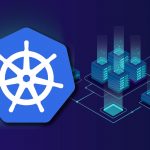The global datasphere is exploding with hundreds of zettabytes of data produced every day. All the Big Data trends and predictions point to one undeniable fact: Big Data and data analytics will rule the future. The rapid growth of AI, ML, and IoT have all fast-tracked the world toward integrating Big Data into every industry. We are seeing extensive use of Big Data analytics in … [Read more...] about 5 Prominent Big Data Trends You Can Expect in 2022
Big Data
Learn everything you need to know about big data. Find out how companies are using this revolutionary technology and what it means for your business strategy.
The Average Data Science Salary (Report)
Our crowd-sourced salary reports are in their sixth year, offering key insights from professionals with backgrounds in data science, machine learning and AI. Read on to find out our highlights from the Europe and UK Data Science Salary Report 2022 Overview This year, 69% of respondents were male, 28% female and 3% preferred not to say. The majority of participants were from … [Read more...] about The Average Data Science Salary (Report)
Beginner’s Introduction to Monitoring in Kubernetes
With layers and layers of clusters, pods, and underlying issues, Kubernetes monitoring is a fairly complex issue that becomes a game of juggling several balls at once. From finding the issue to actually dealing with it, this platform presents a unique challenge when it comes to monitoring. Within this article, we'll be givingan introduction to Kubernetes monitoring, pointing … [Read more...] about Beginner’s Introduction to Monitoring in Kubernetes
The Definitive Guide to Data Warehouse vs. Data Lake vs. Data Lakehouse
Struggling to harness data sprawl, CIOs across industries are facing tough challenges. One of them is where to store all of their enterprise's data to deliver robust data analytics. There have traditionally been two storage solutions for data: data warehouses and data lakes. Data warehouses mainly store transformed, structured data from operational and transactional systems, … [Read more...] about The Definitive Guide to Data Warehouse vs. Data Lake vs. Data Lakehouse
What Are The Most Useful Methods And Techniques In Data Analysis
Every day, Data Scientists use several methods and techniques in order to change raw data into actionable insights and help businesses make informed decisions and reach their goals. Here we will see what are the most used data analysis techniques and when they should be used. With digital transformation, managing data and analysing it has become central to many business … [Read more...] about What Are The Most Useful Methods And Techniques In Data Analysis
What is big data?
Big data is a term that refers to the massive amount of digital data created and shared every day. Big data can transform how we live, work, and communicate. It can be used to improve everything from public health and urban planning to business and marketing.
Big data is also changing the way we think about privacy and security. The volume, velocity, and variety of big data present challenges and opportunities for organizations and individuals. Regardless, big data is here to stay, and its impact will only continue to grow in the years to come.
What is big data analytics?
Big data analytics is the process of turning large, complex data sets into actionable insights. Businesses use various analytical tools and techniques, including machine learning and statistical analysis, to do this.
Big data analytics can be used to improve decision-making in areas like marketing, operations, and customer service. It can also be used to identify new business opportunities and optimize existing processes. With the help of big data analysis, businesses can gain a competitive edge by using their data better.
Want to learn more about big data? Datafloq has courses available. Contact us to get started.
When was big data introduced?
The term big data was coined in the 1990s, with some giving credit to John Mashey for popularizing the term. However, the concept of big data has been around for much longer.
Where does big data come from?
In the early days of computing, scientists and businesses began to realize that the amount of data being generated was increasing exponentially. As a result, they began to develop new methods for storing and processing data.
Over time, these methods have become increasingly sophisticated and have played a key role in enabling businesses to make sense of vast amounts of information. Today, big data is used in various industries, from retail to healthcare, and its importance is only likely to grow in the years to come.
What are examples of big data?
One of the most common examples of big data is social media data. With over 2 billion active users, Facebook generates a huge amount of data every day. This includes information on user interactions, posts, and even location data. Analyzing this data can help companies better understand their customers and target their marketing efforts.
Another example of big data is GPS signals. These signals are constantly being generated by devices like cell phones and fitness trackers. When combined with other data sets, GPS signals can be used to provide insights into everything from traffic patterns to human behavior. Finally, weather patterns are another type of big data set. By tracking these patterns over time, scientists can better understand the impact of climate change and develop strategies for mitigating its effects.
How do companies use big data?
Companies use big data in marketing, product development, and customer service. By analyzing large data sets, businesses can identify patterns and trends that would be otherwise difficult to spot. For example, a company might use big data to track customer behavior patterns to improve its marketing efforts.
Alternatively, a company might use big data to improve its products by identifying areas where customers are most likely to experience problems. For instance, big data can be used to improve customer service by finding pain points in the customer journey. Ultimately, big data provides companies with a valuable tool for gaining insights into their business operations.







